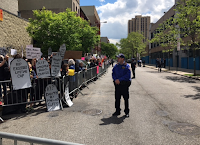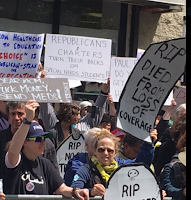For more information:
Rachael Stickland, (303) 204-1272
rachael@studentprivacymatters.org
Josh Golin, (617) 896-9369,
josh@commercialfreechildhood.org
Tuesday, May 16, 2017 – Amid growing concerns about data privacy and surveillance, the Parent Coalition for Student Privacy (PCSP) and the Campaign for a Commercial-Free Childhood (CCFC) have created an important resource for parents to understand and safeguard students’ personal information.
Rachael Stickland, Co-chair of the Parent Coalition for Student Privacy, explained that many parents are under the false impression that sensitive student records are stored securely in a paper file under lock and key in the principal’s office. “As a parent of two school-aged children, I know first-hand how difficult it is to comprehend the sheer amount of digital data students generate during the course of a normal school day and what that means for our children’s future. With districts outsourcing operations like bus, cafeteria, and instructional services to vendors who store student personal data in the ‘cloud’ and share it with third parties, including state and federal agencies, it’s more important than ever for parents to take some control over their children’s information. It’s not too late to take action when it comes to protecting our children’s privacy.”
A new
report issued by the Electronic Frontier Foundation found that students’ activities and information are being monitored by tech companies through devices and software used in classrooms. The data collected by schools and technology vendors often include kids’ names, birth dates, browsing histories, grades, test scores, disabilities, disciplinary records, and more, without adequate privacy and security protections or the consent of parents. Yet few guides exist to help parents navigate the confusing patchwork of laws and regulations that govern student privacy, or help them promote stronger protections.
Other currently available resources are overly technical, filled with jargon, or skewed to the interests of educational technology companies rather than parents and students. CCFC and PCSCP’s new Toolkit, designed with input from experts in education, data privacy, and federal law, is designed to put the needs of families first.
“You shouldn’t need a PhD or law degree to ensure that your child’s sensitive student data isn’t shared with commercial entities,” said Josh Golin, Executive Director of the Campaign for a Commercial-Free Childhood. “Our Toolkit demystifies student privacy and empowers parents to set limits on who accesses the information collected by schools and other third parties about their children.”
Stefanie Fuhr, a Minnesota mother of three, said, “I will be sharing the Parent Toolkit for Student Privacy with parents, teachers, and school administrators, because I don’t think many are aware of the use and potential misuse of a child’s educational data, which can have a profound impact on a child’s future prospects. I plan to meet with my school’s principal with a copy of the Toolkit in hand, and start the conversation with the suggested questions it provides.”
“The Toolkit is comprehensive and quite informative,” said Tim Farley, a father and high school principal in New York. “It is appealing to the eye, written in a manner that’s easy to understand by most parents, and it has the information parents need to protect their children’s privacy.”
Education and privacy advocates are hailing this unique new resource. Faith Boninger of the National Education Policy Center, University of Colorado Boulder, said, “The toolkit is a great resource. It walks parents through the many ways that children’s data may be collected and used without their knowledge or consent, and explains what they can do about it. It explains federal student privacy law in plain English. And it includes specific, useful models for advocacy, like questions that parents can ask teachers and principals, and letters to opt out of specific types of data-sharing.”
“The Parent Toolkit for Student Privacy is a powerhouse resource for parents, educators and school districts,” said Laura Bowman, President of the PAA-Roanoke Valley chapter of the public education advocacy group Parents Across America. “By providing easily understood explanations of laws and legal rights, best practices, questions to ask, and ways to advocate for their children, the Toolkit empowers parents with the information they need to ensure their child’s sensitive information is safeguarded.”
Phyllis Bush, Co-founder of Northeast Indiana Friends of Public Education, and a Board member of the Network for Public Education, said “Technology has made information readily available with a click, but what do our children pay in the loss of privacy? Reading through the Parent Toolkit for Student Privacy, and following the typical journey of a child through a data-mined school experience, is a stark reminder of the perils that lie before our children. The Toolkit will give parents the tools to pushback against the assault on our children’s privacy.”
The Parent Toolkit for Student Privacy was made possible by a grant from the Rose Foundation for Communities and the Environment.











